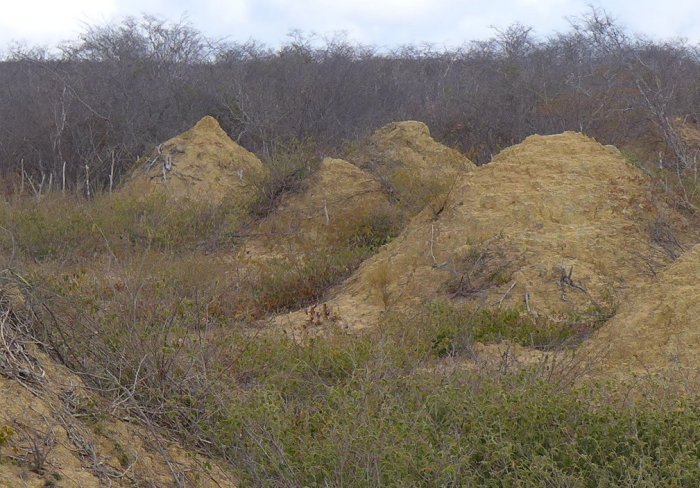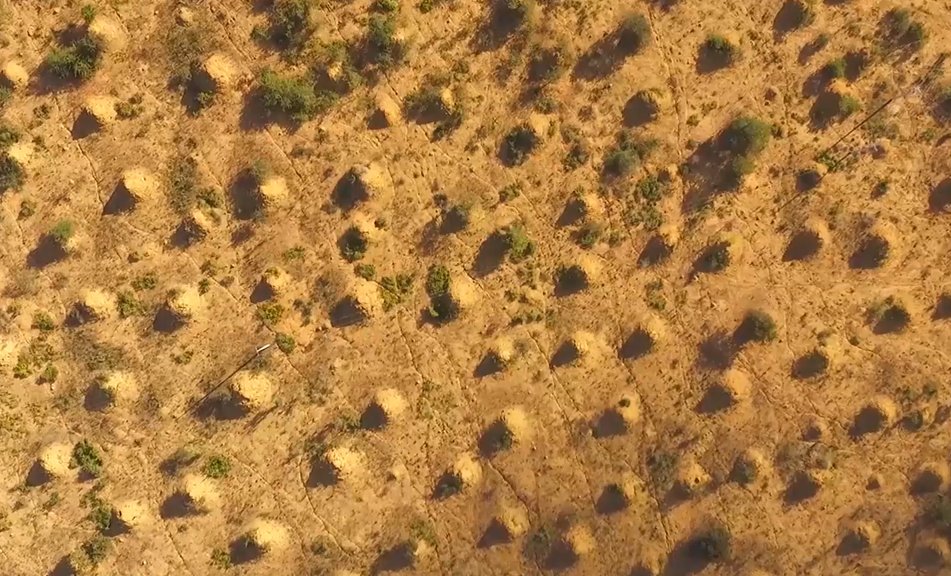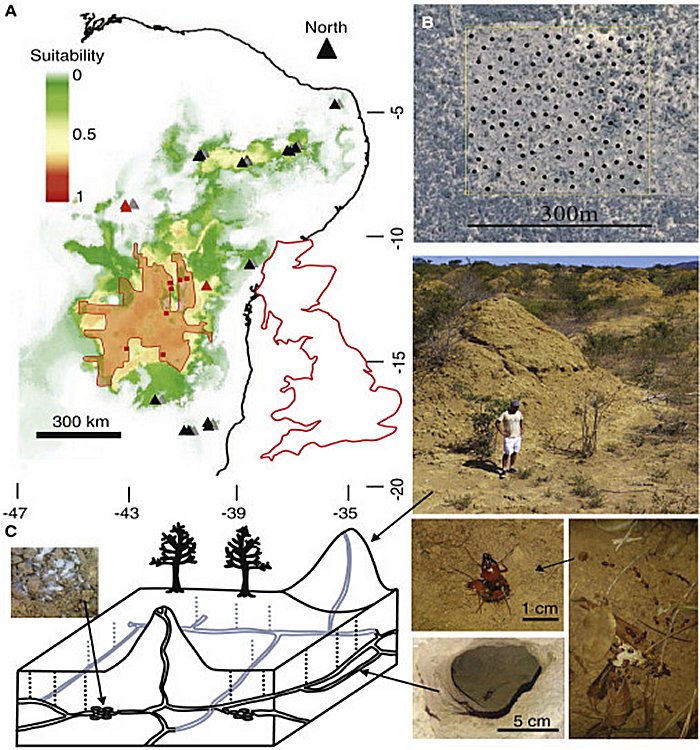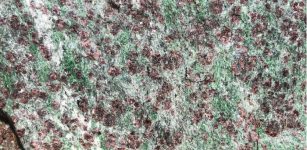4,000-Year-Old Termite Mounds Discovered In Brazil Are Visible From Space
MessageToEagle.com – A vast array of regularly spaced, still-inhabited termite mounds in northeastern Brazil — covering an area the size of Great Britain — are up to about 4,000 years old have been discovered.

“…Largely hidden from view in the fully deciduous, semiarid, thorny-scrub caatinga forests unique to northeastern Brazil, there are tens of millions of 2–4 m high, conical, densely packed earth mounds locally known as ‘murundus’. Based on established distributions of mounds, a MAXENT model predicted their potential distribution. Subsequent ground searches covering thousands of kilometers, and inspection of satellite images, indicated that the mounds cover approximately 230,000 km2 — roughly the size of Great Britain…” researchers write in their paper.
The mounds, which are easily visible on Google Earth, are not nests. Rather, they are the result of the insects’ slow and steady excavation of a network of interconnected underground tunnels. The termites’ activities over thousands of years has resulted in huge quantities of soil deposited in approximately 200 million cone-shaped mounds, each about 2.5 meters tall and 9 meters across.

“These mounds were formed by a single termite species that excavated a massive network of tunnels to allow them to access dead leaves to eat safely and directly from the forest floor,” says Stephen Martin of the University of Salford in the UK.
“The amount of soil excavated is…. equivalent to 4,000 great pyramids of Giza, and represents one of the biggest structures built by a single insect species.”
“This is apparently the world’s most extensive bioengineering effort by a single insect species,” adds Roy Funch of Universidade Estadual de Feira de Santana in Brazil. “Perhaps most exciting of all — the mounds are extremely old — up to 4,000 years, similar to the ages of the pyramids.”

Soil samples collected from the centers of 11 mounds and dated indicated that the mounds were filled 690 to 3,820 years ago. That makes them about as old as the world’s oldest known termite mounds in Africa.
The researchers investigated whether the strangely regular spatial pattern of the mounds was driven by competition amongst termites in neighboring mounds. Their behavioral tests found little aggression at the mound level.
“It’s incredible that, in this day and age, you can find an ‘unknown’ biological wonder of this sheer size and age still existing, with the occupants still present,” Martin says.
The researchers say there are many questions still to pursue. For instance, no one knows how these termite colonies are physically structured because a queen chamber of the species has never been found.
MessageToEagle.com










